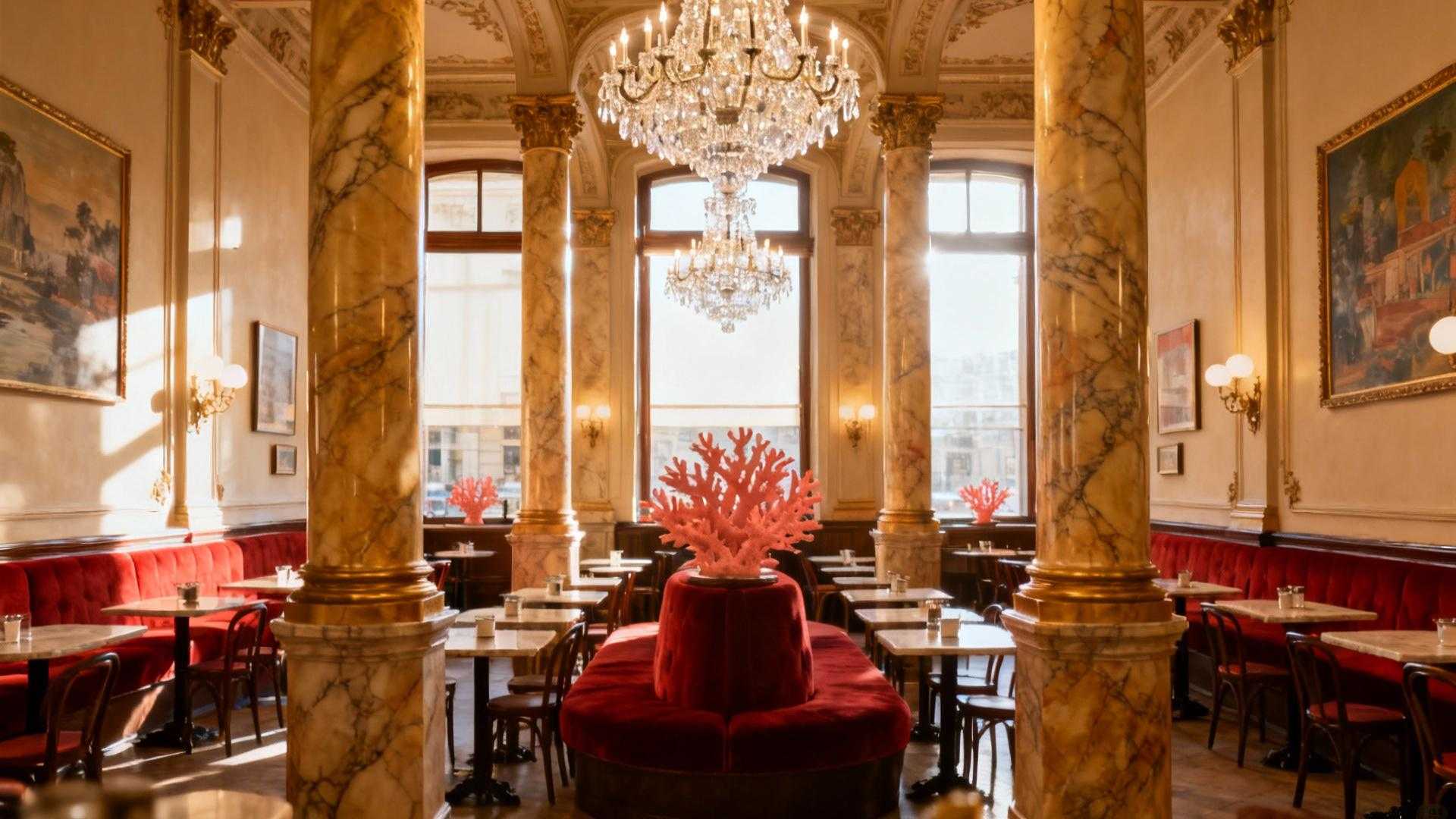At 9:03 AM on a Tuesday morning at Café Central, an American tourist approaches the counter with smartphone in hand, ready to order “coffee” and leave within 15 minutes. Across the ornate room, beneath crystal chandeliers and marble columns, a Viennese gentleman settles into red velvet upholstery with his Melange and three newspapers, prepared for his usual two-hour ritual. This scene reveals everything tourists misunderstand about Vienna’s UNESCO-protected café culture, where rushing through coffee isn’t just rude—it’s missing the entire point.
The mistake that gives you away before you even sit down
Walking into Café Landtmann expecting Starbucks-speed service immediately marks you as a tourist. Vienna’s 17 UNESCO-recognized coffeehouses operate on a 240-year-old rhythm where waitstaff deliberately maintain formal, unhurried pacing. Tourists who check watches while waiting five minutes for their first coffee have fundamentally misunderstood these establishments as fuel stops rather than cultural institutions.
The moment you attempt ordering at the counter instead of waiting for table service, every local notices. As Maria Schneider, head waitress at Café Central with 28 years experience explains: “Within two minutes, I can tell tourists from locals. Tourists look at their watches while waiting for coffee. Locals know coffee comes when it’s ready.”
What Viennese café culture really means (and why tourists completely miss it)
After the 1683 Ottoman siege left behind abandoned coffee beans, Viennese transformed these discoveries into social institutions fundamentally different from Parisian political cafés or Italian espresso bars. Unlike Paris’s hidden etiquette rules that focus on brief interactions, Vienna’s café culture celebrates prolonged idleness as sophisticated behavior.
Why your waiter seems “slow” (they’re actually being respectful)
That five-minute wait tourists perceive as poor service represents professional respect for your space. Thomas Vogel, waiter at Café Sperl, clarifies the cultural difference: “Americans expect smiles and small talk. We provide perfect service but not friendliness. I’m not your buddy—I’m a professional doing my job.”
The 240-year tradition tourists mistake for bad service
Formal address protocols require patience most tourists lack. Saying “Herr Ober” (Mr. Waiter) comes only after establishing initial contact, never when first approaching. Karl Weber, café owner since 1998, explains: “The coffeehouse is Vienna’s living room. We don’t drink coffee to stay awake—we drink it to be with people, or to be alone.”
The 7 café mistakes that instantly mark you as a tourist
Survey data from 30 Vienna café servers reveals 74% of first-time visitors attempt counter ordering, while 61% order generic “coffee” instead of traditional varieties. The most embarrassing mistake involves leaving immediately after finishing—only 12% of locals exit within 30 minutes, compared to 68% of tourists.
Ordering “coffee” instead of Melange or Einspänner – the vocabulary locals use
Generic “coffee” requests get you weak filter coffee that locals consider barely drinkable. Proper orders include “Melange” (espresso with steamed milk in a bowl-sized cup) at €4.20 average, or “Einspänner” (strong black coffee with whipped cream floating on top, served in glass). Like Copenhagen’s protected brasserie culture, specific terminology demonstrates cultural respect.
Rushing to leave when you finish – why locals stay for 2+ hours
Anna Fischer, lifelong Viennese resident, describes the cultural shock: “I was shocked when I visited New York and they handed me the check immediately after dessert. Here, the check comes when you ask for it. Some days I read three newspapers, have two coffees and stay three hours.”
What locals actually do at Viennese cafés (tourists never notice this)
Regulars maintain rituals tourists completely miss: 89% of locals order coffee with pastry between 11 AM and 4 PM, compared to just 42% of tourists. Similar to Tel Aviv’s unspoken local habits, Viennese café behavior follows unwritten codes about newspaper sharing, formal greetings, and respectful silence.
The average local spends 87 minutes per café visit, reading three newspapers while savoring Sachertorte paired with their Melange. Historic venues like Café Sperl (established 1880) maintain 12-15 daily newspapers on wooden stands, creating intellectual sanctuaries where contemplation trumps productivity.
Your Questions About Viennese Café Culture Answered
How do I ask for the check without looking like a rushed American?
Use the phrase “Darf ich bitte zahlen?” (May I please pay?) rather than demanding immediate bills. Place 10-15% tip directly on the saucer in cash, never folded. Never expect checks to arrive automatically—this suggests you’re being hurried out, which contradicts café philosophy.
What coffee should I actually order to blend in with locals?
Order “Einen Melange, bitte” for Vienna’s signature drink, or “Kleiner Brauner” for black coffee with cream on the side. Like Montreal’s protected food rituals, authentic coffee names demonstrate cultural integration. Avoid Americano requests, which mark you as accommodating tourists rather than cultural participants.
How does Vienna’s café culture compare to Paris or Rome?
Vienna averages 87-minute café visits versus Paris’s 25 minutes and Rome’s 31 minutes—making Viennese culture 3.5 times slower than Parisian café experiences. Vienna ranks number one for “most authentic café culture” by the European Coffee Culture Institute, followed by Lisbon and Budapest. Price comparisons show Vienna’s €4.20 Melange costs 117% more than Roman espresso but delivers fundamentally different cultural experiences.
The same American tourist now returns to Café Central three days later, ordering “Einen Melange, bitte” with proper “Herr Ober” address. He settles into familiar red velvet seating with Wiener Zeitung newspaper, no smartphone visible, no rush to leave. The waiter nods approvingly—invisibility achieved through cultural integration, the highest compliment in Viennese café society.
